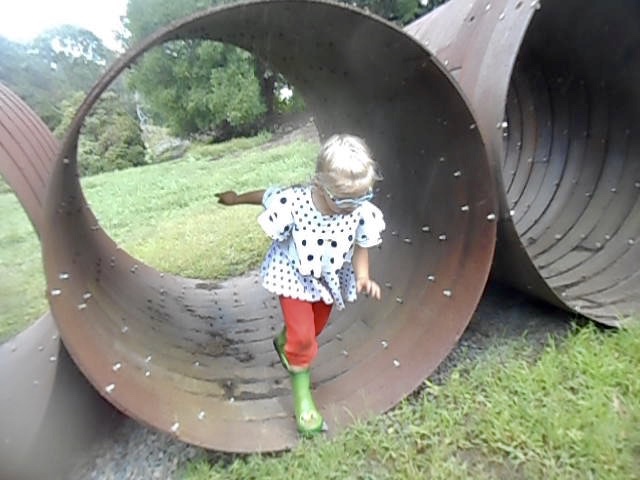Holes are a source of fascination for this age group.
Already we have plenty of evidence for this!
The open-ended nature of this concept allows for plenty of entry points:

Henry, Jack and Chris connect by filling each others’ containers at the water table. And holes can be used for measuring – how much can fit in this hole?
Children use holes for social connection.

Holes address object permanence – when an object disappears in a hole, is it still there?
Kesler puts a wooden figure into a hole in a cabinet, then searches for where it has gone.
A hole can give a sense of mastery – or it can offer a challenge, an opportunity to solve a problem.
Josie joins Kesler, and together they work on getting a stuck piece through the hole.
Holes contain order –
and they contain mystery.

Johann peers closely
into a cabinet hole.
Holes are a part of us!
Josie and Jack notice holes in the
eyes,
nose,
and ear
of Listening Stone.

Part of the attraction of being in a hole is the awareness of the out, and vice versa…




